Peranakan cuisine – which marries primarily Chinese, Malaysian and Indonesian culinary influences – offers a veritable feast of rich flavours, aromatic spices and fresh herbs that make for a thoroughly satisfying meal. Also known as Nyonya food, it originates from the descendants of migrants from China who settled around the Malay Peninsula and Indonesian Archipelago – Singapore, Penang and Malacca in particular – between the 15th and 17th centuries.
Regional ingredients that feature heavily in Peranakan dishes include coconut milk, lemongrass, torch ginger, galangal, belachan and kaffir lime leaves: creating a hearty and balanced flavour profile that champions regional produce. Whether you’re in the mood for no-nonsense, homey Peranakan fare or want to experience a contemporary take on traditional dishes, we’ve got you covered with our list of top-notch establishments to indulge in a sumptuous Nyonya feast.
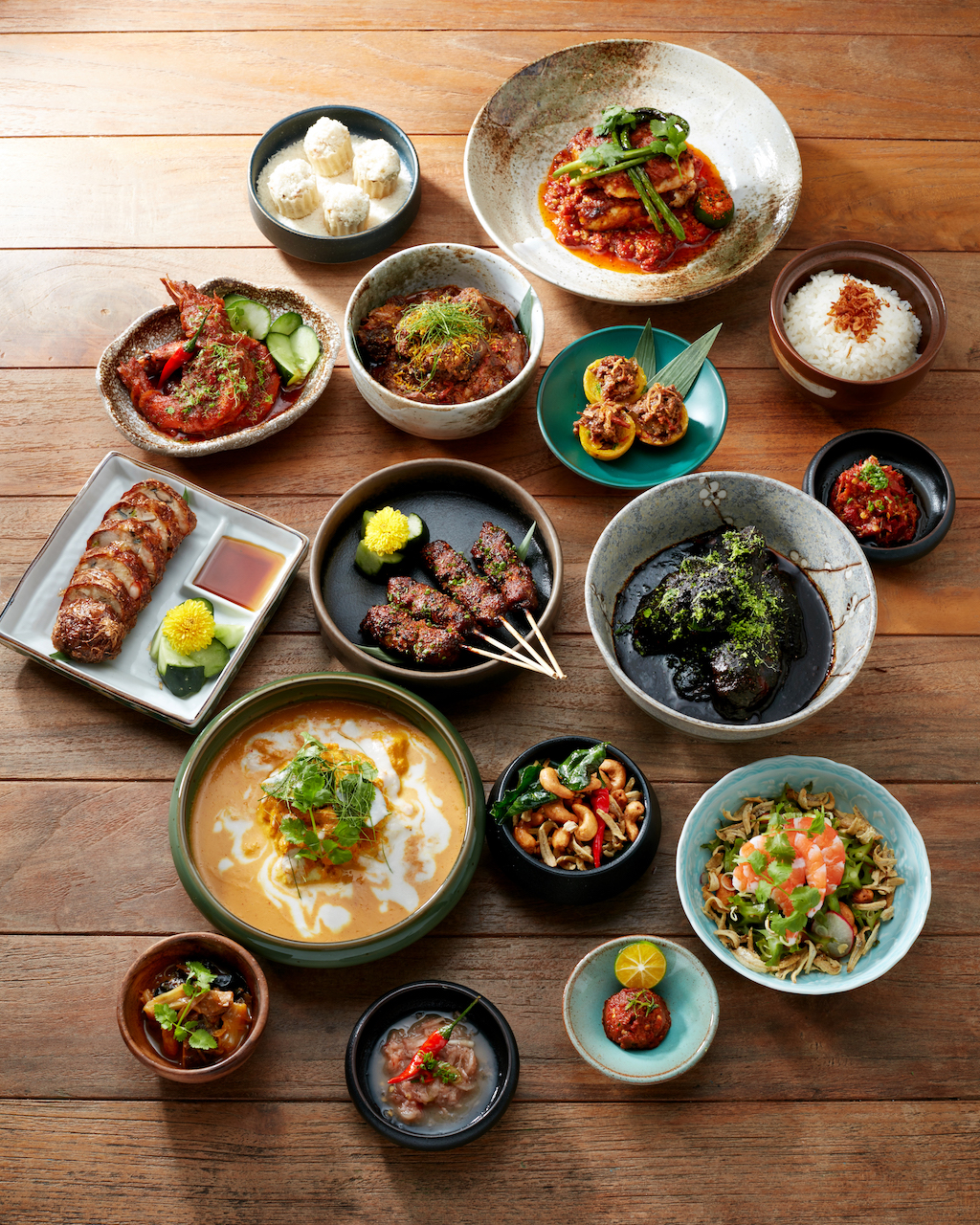
1. Candlenut
Boasting the title of the world’s first Michelin-starred Peranakan culinary establishment, Candlenut is your go-to for a contemporary take on the centuries-old cuisine. Treat yourself by splurging on chef Malcolm Lee’s “Taste of Candlenut” seasonal tasting menu – available during both lunch and dinner services – through which he explores the myriad flavours of his heritage. The current dinner option features offerings such as Buah Paya Muda Rojak (green papaya, honey pineapple and other fresh ingredients tumbled in a homemade rojak sauce); Ikan Gulau (red snapper curry with okra and eggplant); and Gula Melaka Cake to finish.
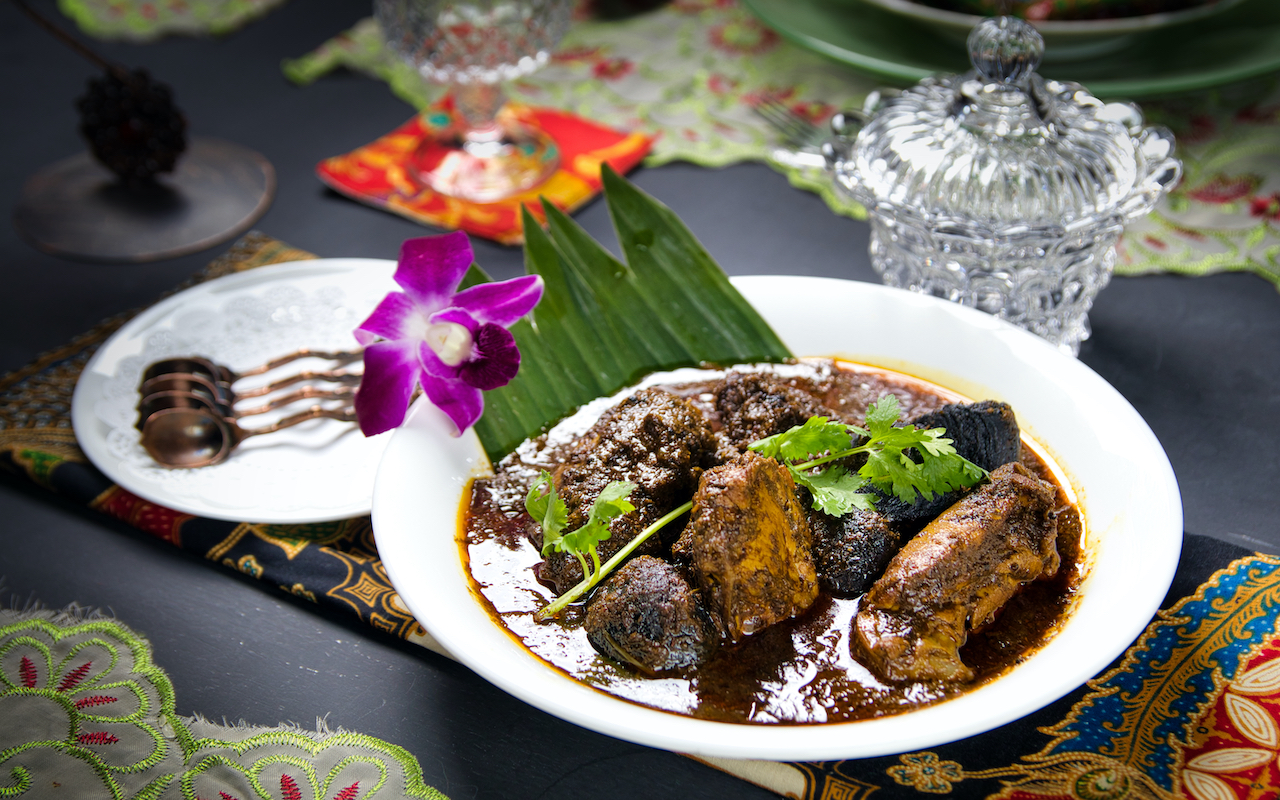
2. The Peranakan
Tucked away on the second floor of Claymore Connect, The Peranakan has all the design trimmings to make you feel like you’re dining in a Straits Chinese kitchen of yesteryear. Walls sport colourful wallpaper with tiny flower prints – you’ll also find these motifs in the tablecloth patterns – while dark-wood furniture, marble tabletops and gold-trimmed chandeliers decorate the space. The menu is made up of recipes that have been passed down through chef Raymond Khoo’s family through multiple generations. The Sup Bakwan Kepiting (a soup made from crabmeat, pork or prawn balls and bamboo shoots), Ayam Buah Keluak (chicken stewed in a rich gravy) and Satay Babi Sum Chan (Peranakan-style satay) are all winners.
3. Charlie’s Peranakan Food
With Golden Mile Food Centre recently reopening after a long renovation exercise, customers are once again able to tuck into Charlie’s Peranakan Food’s humble yet hearty fare. The cult-favourite basement hawker stall, which often draws long queues, plates up affordable Peranakan dishes that taste almost as good as your grandmother’s cooking. We recommend the Nangka Masak Lemak (jackfruit curry), Babi Pongteh (stewed pork with mushrooms and bamboo shoots) and Gulai Tumis (tamarind fish curry) with a side of rice to mop up all of that delicious gravy.
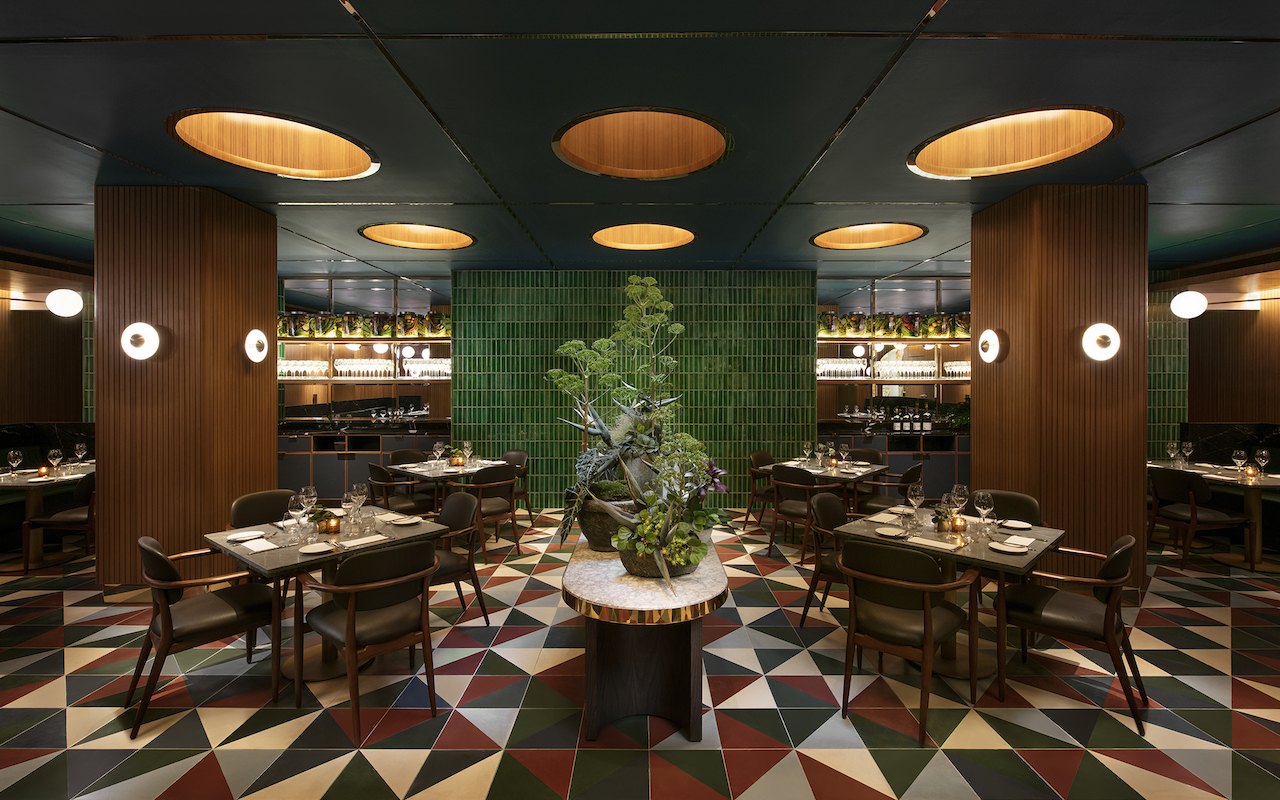
4. Kin
Chaired by veteran celebrity chef and MasterChef Singapore judge Damian D’Silva, Kin is one of the city-state’s most recognised fine-casual restaurants serving local cuisine. But rather than serving straight-up Peranakan fare, Kin blends the latter with elements of Malay, Chinese, Eurasian and Indian culinary styles to create an offering that is uniquely Singaporean. Start with the Hakka Fried Pork (pork belly with fermented beancurd and black bean sauce) before progressing to the Ayam Lemak Chilli Padi (braised chicken with fresh coconut milk and assorted herbs and spices) and – for a pleasantly spicy and bitter hit – the Sambal Prawn Petai, which comes enveloped in a piquant sambal sauce. For dessert, there’s the Kueh Kosui: a sweet treat made from steamed tapioca starch, gula melaka and grated coconut.
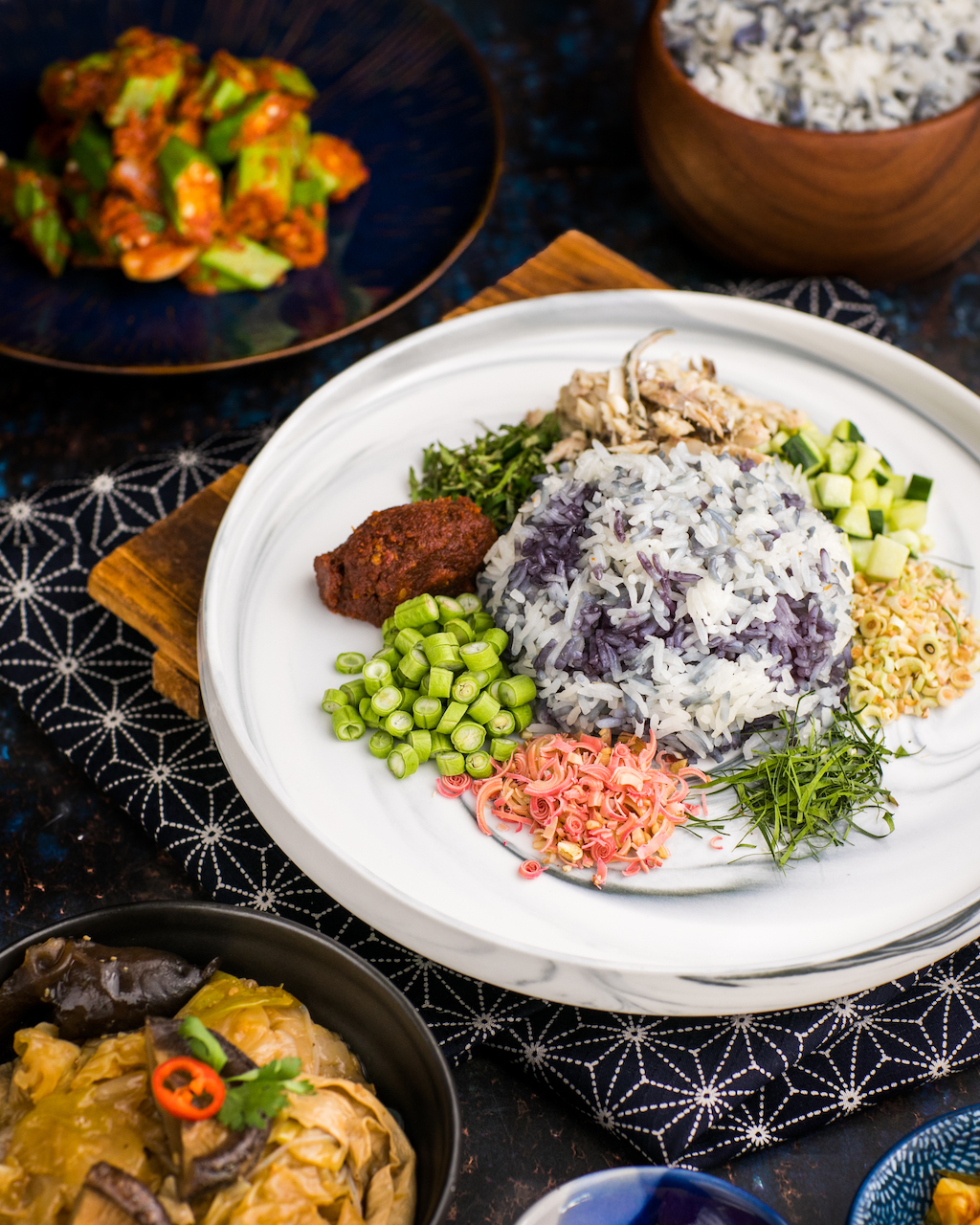
5. Godmama
Stuck in the CBD and craving Peranakan food? Make your way to the centrally located Godmama. Occupying a fourth floor space at shopping mall Funan, the outlet’s contemporary minimalist-chic interior mirrors the ubiquitous café aesthetic to a tee. Dine on casual and comforting renditions of Nyonya favourites, including Emping Belinjo (crackers served with homemade belacan mayo); Itek Sio (duck cooked in a coriander sauce); Ikan Masak Nanas (grilled barramundi cooked in a tamarind stew with pineapple) and Kacang Pankang (stir-fried long beans with dried shrimps and sweet potatoes in a coconut gravy). Godmama also offers a range of Peranakan-inspired cocktails to go along with your meal. Try the heady Nenas Knows Best: pineapple rum with mezcal, pineapple jam, lime and cardamom.

6. Old Bibik’s Peranakan Kitchen
Located in the colourful heritage area of Joo Chiat – arguably the city-state’s main enclave for Peranakan culture – Old Bibik’s Peranakan Kitchen is a casual, no-frills outlet that serves authentic Nyonya delights at prices that won’t break the bank. It’s Halal-certified and purports to use only the freshest ingredients to make its dishes. A must-try is the Grilled Sambal Barramundi, in which the deep-sea fish is smothered in a mouth-watering sambal relish and topped with fresh herbs and thin slices of lime. Other moreish options include the Signature Beef Rendang, which features succulent beef chunks braised in a myriad of spices until tender; and kang kong stir-fried in a classic garlic or sambal sauce.
7. The Blue Ginger
This spot has been a crowd favourite since first opening its doors in 1995. Today, the Michelin Bib Gourmand recipient boasts two outpost: one at Tanjong Pagar, which is situated in a gorgeous three-storey restored shophouse, and the other at the buzzy Great World shopping centre. At the cosy Tanjong Pagar location, which is perfect for an intimate date night, you can choose from a selection of well-executed Peranakan favourites: including Pork Ribs Assam (braised pork ribs in a tamarind sauce); Hee Peow Soup (fish maw, fish and prawn balls and cabbage in a clear broth); and Ngo Hiang (fried minced pork and prawn roll).
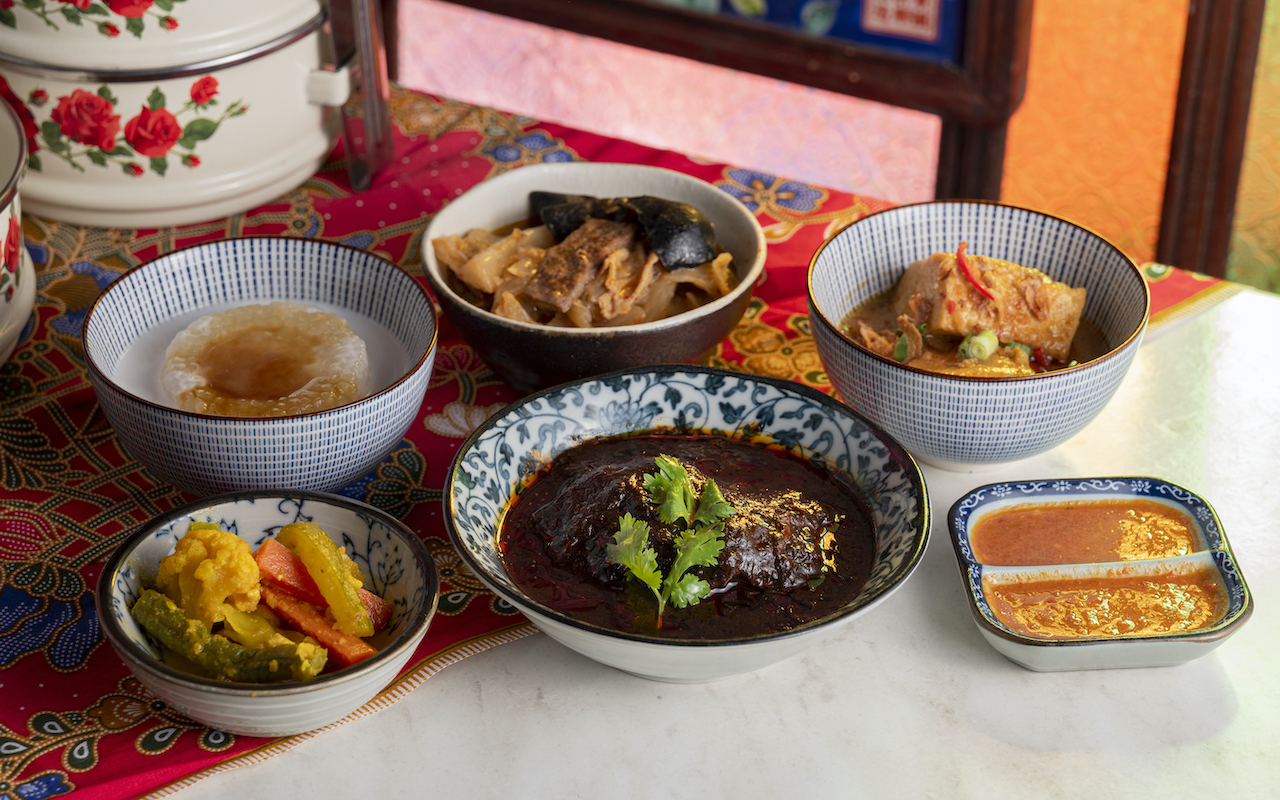
8. Tingkat Pera Makan
This restaurant derives its moniker from “tingkats” – layered containers that Peranakan mothers of yore would use to ferry home-cooked meals to a loved one at work or at school. Run by founder, chef and fourth-generation Nyonya Kathryn Ho, Tingkat Pera Makan applies a similar nurturing and homey ethos to its cooking. Diners can expect down-to-earth favourites redolent of nostalgic and familiar flavours. You can order a set option, which includes a main, two sides, a drink and a dessert. Our pick for a main is the signature Ayam Buak Keluak, in which the chicken is braised until tender in a sauce of garam assam and Indonesian black nut pulp. And for dessert, durian fiends will delight in the Durian Pengkat: a rich and velvety durian mousse.

9. Guan Hoe Soon Restaurant
Another Joo Chiat stalwart, Guan Hoe Soon Restaurant has been serving comforting Peranakan plates since 1953, making it one of Singapore’s oldest spots for Nyonya cuisine. To add to its claim to fame, it was also reportedly the Peranakan joint of choice for the late Prime Minister Lee Kuan Yew. Feast on traditional dishes such as Ayam Buah Keluak (stewed chicken in gravy), Babi Pong Tay (braised pork), Nyonya Chap Chye (braised vegetables) and Sayor Lodeh (vegetable stew). The decor may be nothing to write home about, but the food here definitely hits the spot.
Please check the establishments’ respective websites for opening hours before visiting, and remember to adhere to safe-distancing measures while out and about.
SEE ALSO: 5 ways to enjoy Singapore’s Peranakan culture
The post Where to get mouth-watering Peranakan food in Singapore appeared first on SilverKris.
from SilverKris
No comments:
Post a Comment